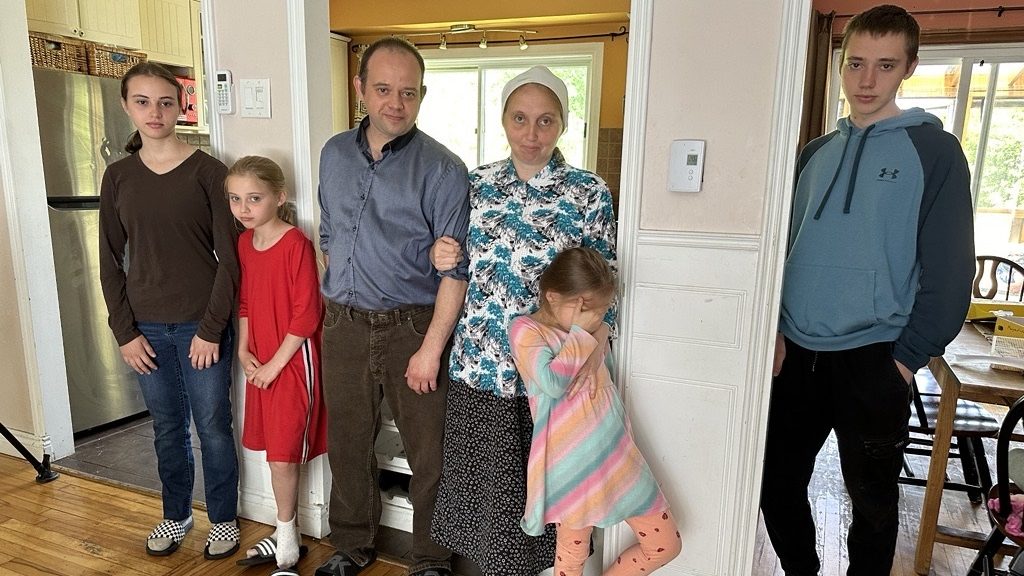Atlantic Ballet addresses domestic abuse with ‘Ghosts of Violence’
Posted May 22, 2012 2:48 pm.
This article is more than 5 years old.
TORONTO – The Atlantic Ballet Theatre of Canada wrestled with a multitude of concerns as it crafted “Ghosts of Violence,” a powerful touring production inspired by women who have died at the hands of an intimate partner.
Beyond the creative worries over how to base a narrative and choreography on such a heavy social issue, the ballet company was also mindful of who might be in the audience and how they might react.
“As an organization, we also had to look at why would we do this? Why are we getting involved as a ballet company in this kind of an issue?” ballet co-founder Susan Chalmers-Gauvin said recently by phone.
The answer? The sobering facts.
“Fifty-one per cent of women over the age of 16 have experienced some form of abuse — half the women in Canada. It’s a phenomenal statistic,” said Chalmers-Gauvin.
“One to two women are murdered every week in Canada; dating violence has increased by 40 per cent in four years; of the women who are killed, the highest incident of death is young women between the ages of 15 and 24 years of age.
“So that was shocking, and that gave me, as a CEO, a great sense of responsibility from an organizational perspective that this is an issue that we all have to care about.”
“By this production, if we can save only one life, it’s the reason to do it,” said Igor Dobrovolskiy, the ballet’s founding artistic director and choreographer.
“Ghosts of Violence” debuted in February 2011 in Ottawa and has since gained international attention and landed national sponsors including the RCMP, the Canadian Nurses Association and the Canadian Association of Social Workers.
This Friday and Saturday the ballet company makes its Toronto debut with the production at the Bluma Appel Theatre, in the St. Lawrence Centre for the Arts, as part of a three-year Canadian tour. Chalmers-Gauvin said the ballet company also hopes to take the production to the U.S. and Europe, noting they’re already in discussions with France.
Aided by visual projections and the music of Russian composers Alfred Schnittke and Sergei Rachmaninoff, the story by playwright and director Sharon Pollock follows four women in relationships that escalate into patterns of domestic violence.
In each community the production visits, the ballet company brings in various women’s groups to erect installations and booths in the venue’s lobby. The company also holds a pre-show discussion and puts on a free performance for a local high school.
The idea for the production arose in 2007 when the New Brunswick Silent Witness Project, which honours women who are victims of domestic violence, asked Dobrovolskiy to create a nine-minute piece for a gala dinner.
“Our dancers went up onstage and performed, and 500 people were brought to tears immediately,” said Chalmers-Gauvin.
The Silent Witness Project then asked Dobrovolskiy to do a full-length ballet.
“It was pretty scary to do that because first of all, it’s not typical for ballet, especially a two-act ballet,” he said. “I was really concerned but I’m happy we found with Sharon a very good storyline, and then the choreography started to flow for me.”
Pollock, a two-time winner of the Governor General’s Literary Award for Drama, has often tackled social themes in her career as a playwright.
But she, too, had concerns.
“One challenge I felt was simply, in the language of dance, how do we want to express the violence that’s experienced?” she said. “Do we want an enactment of a more literal, physical assault, or how far do we go with that?”
Pollock also wanted to avoid stereotypes and a Pollyanna ending but still inject a sense of hope so the audience won’t declare: “‘Oh God, isn’t this horrible? Let’s go home and have a drink,'” she said.
“Wouldn’t it be wonderful if she gets away at the end, wouldn’t that be great? But that isn’t what this is about.
“This is about the woman who society has turned their back on, whose friends have ignored her, who she herself has hidden it, and she doesn’t get away. That’s the tragedy of it, and hope lies with the audience. They’re the ones that have to be moved to action.”








